Browse Exhibits (8 total)
Musical forms
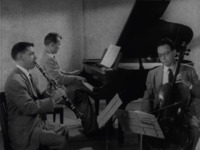
6 episodes, 1956, University of Southern California Department of Cinema
From WNET:
"Henri Temianka, leader and first violinist of the Paganini Quartet, serves as narrator on this series of six half-hour programs designed to explain the forms used by composers in simple terms for the layman. A program is devoted to each of the following forms: sonata, scherzo, rondo, theme and variation, fugue, and song-form. Members of the Quartet and distinguished guests from the University of Southern California Music School faculty presents illustrative selections to supplement Temianka’s narration. Temianka, well-known musician and music educator, wrote and directed the series for production by the University of Southern California Department of Cinema."
Keyboard conversations
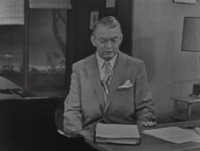
18 episodes, 1959, WKAR-TV (East Lansing)
From WNET:
"This is an informal series of discussions on form in music. It features many selections from classical music compositions as illustrations of points in the discussion. The series was produced by WKAR-TV, East Lansing (now WMSB)."
Music for young people
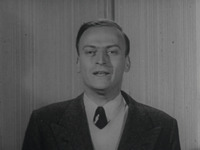
13 episodes, 1956, Arts and Audiences, Inc.
From WNET:
"The 13 programs introduce young people to the instruments in the string, woodwind, brass, percussion and keyboard sections of an orchestra. Violinist Yehudi Menuhin and conductor Thomas Scherman appear as commentators during several of the programs. Children participate in the programs, learning about music from famed musicians, including members of the Julliard String Quartet, Stradivarius Society and the New York woodwind and Brass Quintets. The programs take up the instruments themselves and the music that is composed for them."
Music as a language
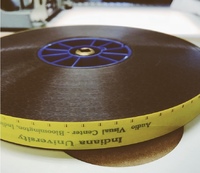
13 episodes, 1957, University of Rochester
From WNET:
"'Music as a Language' shows how a composer communicates to his audience through his music. Demonstrating innumerable aspects of composition, orchestration and instrumentation, Dr. Howard Hanson explains how he and other composers use consonant and dissonant rhythms and harmonies. Most of the material used in the series is a result of nearly thirty years of research and performance in the field of music by Dr. Hanson. Many of the illustrative devices used him originated in his own composition classes. One large chart, for example, a product of nearly ten years work, maps the music of the last three hundred years in an astronomy of sound. On the basis of its tonal sonorities and their inter-relationships, Dr. Hanson shows how music, from the time of Palestrina to the present, can be roughly categorized into different periods in our history. He shows, too, how so-called “modern” music was used by Handel and Beethoven, and the relationship that exists among boogie, primitive music and some of the works of Beethoven, Stravinsky and his own compositions. The essence of the series is the authority given to what is said and done by the composer himself. For the first time, an audience will have the opportunity of seeing an artist critically analyze his own works. These include his Fifth Symphony; his opera, “Merry Mount” and other compositions. The series was produced for the Center by the University of Rochester, under the direction of Don W. Lyon, Director of Television for Rochester, who serves as the program’s announcer."
Music and the Renaissance
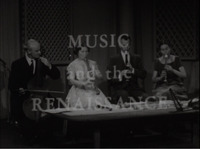
10 episodes, 1958, WQED (Pittsburgh)
From WNET:
"'Music and the Renaissance' introduces viewers to the effect life in the Renaissance period had on the musical compositions of that period, with particular emphasis on the court, church, art and literature of the time. Colin Sterne, assistant professor of Music History and Literature at the University of Pittsburgh, present the music of the Renaissance period played on authentic instruments used during that period (recorder, viola da gamba, lute, tenor viol, virginals, etc.). The performing musicians are members of the Saturday Consort. Italy, Germany and the Netherlands are the countries on which the series concentrates. The series was produced by WQED, Pittsburgh, with Colin Sterne as producer."
Opera for today

6 episodes, 1957, WQED (San Francisco)
From WNET:
"Boris Goldovsky shares with the television audience his knowledge of opera, his philosophy of operatic production. “Opera for Today” was produced by WQED, Pittsburgh, with Arthur Schoep of the New England Opera Workshop as Producer and John W. Ziegler as Director."
Spotlight on opera
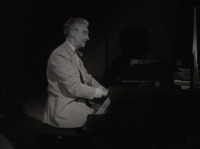
16 episodes, 1955, UCLA
From WNET:
"The series features Dr. Jan Popper, professor of music at the University of California, who has served as guest director of the famed opera school at the Berkshire Music Festival in Tanglewood, Mass., and as guest conductor for the Hollywood Bowl. Active as a lecturer in the fields of symphony and opera, Dr. Popper spells out on the keyboard and through lively discussions some of the great music of the ages. The series was produced by the University Extension, University of California."
Passing notes on music
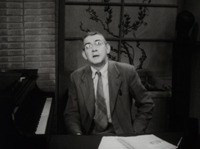
26 episodes, 1958, WKAR (Michigan State University)
From WNET:
"A composer, conductor and music historian, Professor Gomer L. Jones of Michigan State University introduces the viewer to the basic elements of music in a series of incidental commentaries on the sense and structure of music, but it will increase the viewer’s appreciation. In the first 13 programs, Dr. Jones covers such topics as tempo, rhythm, pitch, loudness, timbre and tonality. In the last 13, he comments on texture, polyphony, motivic repetition, sectional and thematic repetition, ternary form, motivic and thematic variation, thematic development and variation form."

